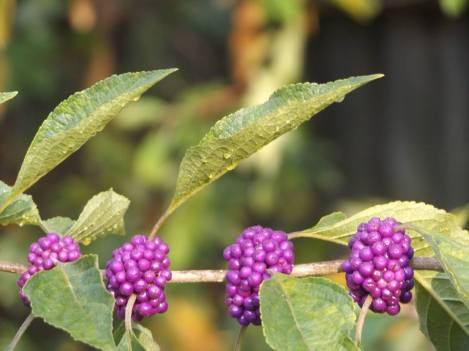
The first two years at our little farm we concentrated on establishing flocks of poultry and rabbits, growing a vegetable garden, planting fruit trees, and remodeling the house, but now that we have gotten a great deal accomplished my mind has turned to growing plants purely for their beauty and sweet fragrance. I am using almost exclusively perennials so that once established they either keep popping up or reseed themselves without a great deal of help from me.
Everyone has heard the expression flower garden and flower bed and as I work on my project I wanted to know if the terms were interchangeable or if there was, at least in the old days, a discernible difference in the two. Jane Loudon answered my question in her book first published in 1841.
“Beds for Flowers—Divisions of a flower-garden, which are formed in different figures, and which are generally covered with a mass of flowers of one kind, or at least of one colour, though sometimes they contain single plants, or small tufts of plants and flowers, at regular distances, with naked spaces showing the soil between.”
She described the flower garden as being symmetrical [and more formal] with divisions containing various plants – each of those divisions would be considered a flower bed. “The ancient English flower-garden is formed of beds, connected together so as to form a regular or symmetrical figure; the beds being edged with box, or sometimes with flowering plants, and planted with herbaceous flowers, Roses, and one or two other kinds of low flowering shrubs. The flowers in the beds are generally mixed in such a manner that some may show blossom every month during summer, and that some may retain their leaves during winter.”
I have, as it would seem, a flower bed; whereas if I transformed my whole back yard into a maze of flower beds edged with low-growing azaleas or a mounding perennial I would have a flower garden. In a broad sense of the term, one might consider the fenced lawn section of our property a garden in that there are sections for fruit trees, berries, azaleas, and perennial flowers that would better be described as beds, especially if I continue to develop it with that end result in mind. Oh! To be retired with time to pursue my dream garden. . . .
I want the old-fashioned blooms my grandmothers and their grandmothers would recognize and appreciate and whenever possible I want fragrant blooms to perfume the air. The following is representative of what I have or would like to add as time goes on.
Allium Ornamental). I have planted these in my perennial bed. They are the same family as edible allium (onions, leeks, chives, shallots, garlic, etc.) They are drought resistant and hardy to zone 4. Varieties come in different heights, flower shape, fullness, and shades of pink, purple, blue, yellow and white. They may be grown from seed or from bulbs.
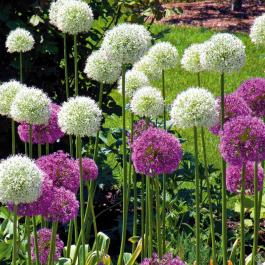 Image from Wikipedia
Image from Wikipedia
Althea. I have two purple-blooming starts I planted by the chicken pen which are growing and looking well. While small, they will grow quickly and cost a fraction of the cost of a larger tree.

Daffodils. I transplanted daffodils and put them around the oak in the front yard and along the back fence separating the yard from the field. I want to add to these adding various heirloom varieties.
Daisy. I’ve purchased seed and fall planted them for blooms next summer. I sowed Alaska daisy and Shasta daisy.
 Image from a gardening catalog.
Image from a gardening catalog.
Campanula. Canterbury Bell.
Campion. Perhaps the best known is Rose Campion which sports attractive silver foliage and dark rose colored blooms.

Carnation. The President of the American Carnation Society said the carnation stands only second to the rose in extent of culture in America. [1905]
Clematis, or as it was known, virgin’s bower, bore various colored flowers including single blue, single red, single purple, and double purple. My transplanted clematis has not done well and should be in a partially shaded area. I plan to add sweet autumn clematis soon as its mass of tiny white flowers and heady fragrance can be enjoyed while sitting on the porch after most other plants have gone into hibernation. Loudon said no garden should be without one.
Cleome. Loudon referred to cleome as a half-hardy annual with white, rose, and purple flowers of easy culture. Seeds can be saved.
Columbines. Alice Lounsberry noted she could hardly think of a color in which there wasn’t a columbine. She seemed partial to a double white tinged with pink which she likened to a sea shell. [1908]
 Image from the Burpee catalog
Image from the Burpee catalog
Coreopsis. Because the naturalist, Thomas Nuttall, brought back seed for coreopsis and passed them on to nurserymen and customers in the U.S. and England it has been known as Nuttall’s weed. Nuttall closely followed the path of Lewis and Clark in the early 1800’s.
Crinum. These lovely lily-like plants weren’t common for our area, but they do very well for me in the middle South and I inherited them when we purchased a home. When we moved to the farm I dug up some and transplanted them. Some are fragrant. They range from white to dark pink in color. Older books often call crinum “spider lily” although this does not mean the red blooms that magically pop up in the fall under that name.
Delphiniums, aka Larkspur. Delphiniums were described by Parkinson in his “Paradisus Terrestris” in 1629. John Lindley said of the Barlowii delphinium it, “presents to the eye the most gorgeous mass of deep lapis-lazuli blue that I am acquainted with in the vegetable kingdom”. He noted it was impossible to describe their beauty when paired with colors that harmonized with the blue. [1837] In 1878 William Robinson described it as a stately perennial in gardens that grew between four to six feet high. He recommended cutting them near the ground after they flower to force them to rebloom in the autumn. I’ve not planted these yet but plan to later.
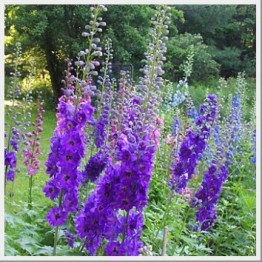 Image from Graceful Gardens
Image from Graceful Gardens
Dianthus (Sweet William). I have deep pink mounds in my perennial bed. These come up well from seed.
Day lily. I have collected various colors and patterns of daylilies and am anxious to see their colorful blooms next year. In past decades family gardens contained only the orange and yellow blooming varieties that Loudon described in 1849 and while I have those planted I also have some of the newer ones. The more exotic the color
 Image from Breck’s catalog
Image from Breck’s catalog
Echinacea or cone flower. Native to North America and used by Native Americans as a medicinal herb to fight an array of ailments. Early European settlers adopted it and it was taken to Europe in the 17th century where German doctors played a large role in its being developed as we know it today. It is perennial, reaches almost 2 feet in height, and its upper parts and roots are still used in herbal medicine.

Fritillaria. This lovely flower is a new one for me, but certainly not new to history. John Parkinson gave an excellent outline of it in his Paradisi In Sole {aradosis Terrestros, 1635. He noted there were single and double blooms, some bloomed earlier than others, and the colors were diverse including red, orange, yellow, white, and black. My garden contains the orange but may soon contain the black as well.

Fuscia. Cultivating this plant was of prime concern during the previous century. “Cultivators exercise an unceasing endeavour to propagate new varieties, and botanical collectors range year by year the coasts of Chili, Peru, and Mexico to discover species hitherto unknown to us. . .It was said to have been first introduced by a sailor, who seeing it growing in Chili brought home some berries to his mother. Who was in humble life. One of these grew, and the plant soon flowered. Old Mr. Lee, the nurseryman of Hammersmith, saw it, and offered so large a price as to tempt the old woman to sell it. It was quickly increased by cuttings, and sold for five guineas a plant. This was in 1788.” [London, 1844] Alas, it is said not to do well in humidity, excessive heat or drought. Fuscia is perennial in zones 10 and 11. Outside that area it should be potted.
Hardy hibiscus. I have one with large pale pink blooms accented with deep maroon centers and two that are orange. I plan to sow seed for the Texas Star, or, Swamp hibiscus. It has deep red petals and is perennial in zones 7-10. It will die back but grow from the roots again in spring. It was grown by George Washington and was called, “a most elegant flowering plant”, by the seedsman Bartram. It is perennial.

Hens and Chicks. (Sempervivum tectorum). These lovely rosettes have graced Southern homes for longer than we care to imagine, often in pots with multiple openings so that it looked like the succulents were growing through the pots. They may also be planted in the ground and are said to overwinter throughout the U.S. They multiply frequently and once the mother, or hen, blooms it dies leaving the young plant, or chick, to take her place. In times past it was also called house leek. “Our own [English] species was originally a native of the Alpine and sub-Alpine regions of Central Europe, but it has now found its way to the tops of old walls, and the thatched and tiled roofs of the houses of all the countries of Europe.” – Phebe Lankester, 1879.
Hollyhock. I remember my aunt’s hollyhocks in lovely pastel shades of pink, yellow, and white. In 1891, the “Journal of Horticulture and Practical Gardening” listed 52 distinct varieties in shades of white, yellow, pink, rose, purple, rosy red, orange, maroon, crimson, apricot, salmon, and peach. Boys gathered them for the girls who strung the flowers into necklaces. In 1878 “Vick’s Monthly Magazine” said if one familiar with the old hollyhocks that grew to 8 to 10 feet tall with single blooms encountered a newer variety he wouldn’t recognize it, the latter rarely growing more than 4 feet tall with double blooms.
Hyacinths. Hyacinths are faithful bloomers and bring as much joy to the nose as to the eye. Illustrations from the early 1800’s show blooms that were not nearly as full and large as today.
Iris. The iris has enjoyed admiration of many European countries and was adopted by King Louis VII in June 1137 as the national emblem of France. The native blue flag of North America ranged from Maine to Minnesota and from Arkansas to Florida. In 1891 Barr’s Nursery advertised the bearded, or German, iris in, “the richest yellows, most intense purples, delicate blues, the softest mauves, and the most beautiful claret-reds. There are whites, primroses, and bronzes of every imaginable shade.” Iris leaves were sometimes used to thatch roofs of homes and the root of the iris, better known as orris root, has been much used in perfume. The tall bearded iris is the newest of the breed.
Oleander. Oleander supposedly came to America in the 1840’s when a gentleman sailed from Jamaica back to Galveston bringing along oleanders for his wife and sister-in-law. As they were passed over the gate and shared the city soon became known for its beautiful yards. In warmer areas there are single and double flowers in yellows, corals, reds, pinks and whites.
Lantana. I don’t remember it being a family favorite but the butterflies love it. Lantana blooms with various colors together in combinations. It was noted in 1876 it was described as white, purple, lilac, rose, yellow, or orange, “the same head often containing flowerets of various colors”. In the 1890’s gardeners were asking if lantana was a friend or enemy because it tended to spread more than some wanted. Butterflies find it irresistible.
Lavender. I planted two small pots and it has spread to three times the size in just two or three short months. I plan to take cuttings to root so that I can be generous with spreading it throughout the yard to enjoy this lovely fragrance.
Lily, Blackberry. This beautiful bloom, so named because its spots resemble a ripe blackberry, is not actually a lily at all. Its foliage resembles an iris and its freckled bloom comes in orange or yellow. Around the turn of the 20th century gardeners wrote in to magazines inquiring about its culture. One reply was that seeds, if sown as soon as ripe, are planted they will produce seedlings as soon as the ground thaws the next spring. I planted three established rhizomes and if all goes well once they start producing the seeds should spread quite nicely and fill in between various plants. When started from seed the plant is not expected to bloom until its second year.
 Image from Encyclopedia Britanica
Image from Encyclopedia Britanica
Lily, Spider/Hurricane/Resurrection. This flower and phlox are burned into my memory as my mother had them everywhere. Like the enchanting village of Brigadoon that magically appeared and disappeared just as quickly, these beautiful red blooms pop up with no warning to spread cheer wherever they are found. I put six of these in my bed and hope that they spread quickly. Lycoris radiata is native to Asia. They reproduce by bulb division.

Image from Wikipedia
Peonies have been grown for generations, but alas, while I favor them, they do not like the heat and won’t adorn my garden at the farm. My aunt had beautiful pink peonies that showed up like regimented soldiers every year.
Marigold – tall full marigolds in orange and yellow are a sight to behold. Save the seed, or in a warm climate they will self-sow. The ones I put in my vegetable garden are cut down and plowed each spring but they come back from the seed to add beauty among my vegetables.

Petunia. One can still find self-sowing petunias in a few specialty heirloom collections. I will be planting the pink Laura Bush variety from Wildseed this spring.
Phlox. This has been a reliable part of gardens for several generations in my family and now they come in an even wider range of colors and heights. Like day lilies and iris, phlox will require separating and replanting when it gets too large. “Phlox is one of the most beautiful of herbaceous plants, and a garden ought to be no more without some of the species than it ought to be without Roses or bulbs”. – Loudon. I planted two colors, one is a dark rose, the other light pink with dark pink centers. Alas the latter put on an amazing show then almost overnight died. My mother has a start for me of the tall purple she has had for years and I will be transplanting it soon.
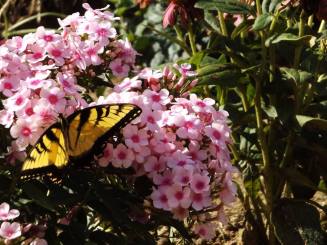
Roses. The roses I remember from childhood were old, or heirloom, varieties, often climbers. Some were fragrant releasing a heavenly fragrance as the buds opened. In 1849 Loudon told her readers there were, “above two thousand named varieties to be procured in the nurseries”. My heirlooms came from Petals From the Past in Jemison, AL and I may shop the Antique Rose Emporium as well. I have two “Pinkie” roses in my bed as well as various climbers and even a couple of wild roses growing on the chicken pen fence.

Rudbeckia/Echinacea/cone-flower. This perennial is a sunshine yellow bloom with dark centers. In 1886 Gray referred to it as a genus of 21 species of North American herbs, many of which are hardy and perennial which usually have yellow rays. . .It includes the black-eyed Susan.

Salvia. I purchased purple salvia for a border around the chicken pen. “No one who has only seen the common Sage growing in a kitchen-garden could imagine the splendid flowering plants which belong to the genus Salvia”. – Loudon.
Snap-dragon. I started with snapdragons when the proprietor of an antique store offered me seed from her deep red variety. They will re-seed themselves.
Statice (thrift). This has also been a faithful addition to family gardens and as an adornment on the graves of loved ones.
Snowdrop. “The Snowdrop is one of the earliest and most exquisite of all our hardy bulbous flowers, and it has been mentioned by nearly all the modern English poets for its modest purity and simplicity.” It is of ancient origins, appearing in a wood engraving in 1576. They multiply by offsets, bloom better the second year, and can be divided and transplanted as needed. – “Journal of the Royal Horticultural Society”. 1891.
Sweet shrub or spice bush. This is a native wonderfully fragrant addition to the garden purchased as a start from the Master Gardener plant sale. It is known by several other names including Carolina allspice.
 Image from Wikipedia
Image from Wikipedia
Yucca (Adam’s needle). I don’t remember yucca in the flower gardens of my aunts or grandmothers but I like it and intend to use it to fill space and add height. “When a Yucca is once established in a particular spot it is rarely meddled with afterwards, except to propagate it; for the growth of the plant being slow, few like to disturb one when it has arrived at a flowering size. It is not every year that the same plant throws up its unique spike of blooms. . .”.
 Image from Wikipedia
Image from Wikipedia
Zinnia/Youth and Old Age. In the late 1700’s John Graefer listed yellow and red zinnias. In 1860 Vilmorin, Andrieux & Co., of Paris were reported to have produced a zinnia with a double bloom. Within five years reports of double blooming zinnias were becoming common. Rev. Henry Ward Beecher was among those who appreciate zinnias because the blooms last so long. I love the contrast of single and double growing together and the more cut flowers you take the more blooms you get. I’ve saved seed all summer and purchased more so that next year I can fill a larger space and attract more butterflies.

Except where noted photos are from my garden. Blissful outdoor meals by your flower gardens or with cut flowers in your dining room to one and all. – Victoria


 Closeup of carrot flower cluster
Closeup of carrot flower cluster Front left: eggplant seed. The red cayenne pepper is ready for seed harvest, the jalapeno seeds would not be mature yet. The bowl in back contains cucuzza seed.
Front left: eggplant seed. The red cayenne pepper is ready for seed harvest, the jalapeno seeds would not be mature yet. The bowl in back contains cucuzza seed. Walking onion
Walking onion

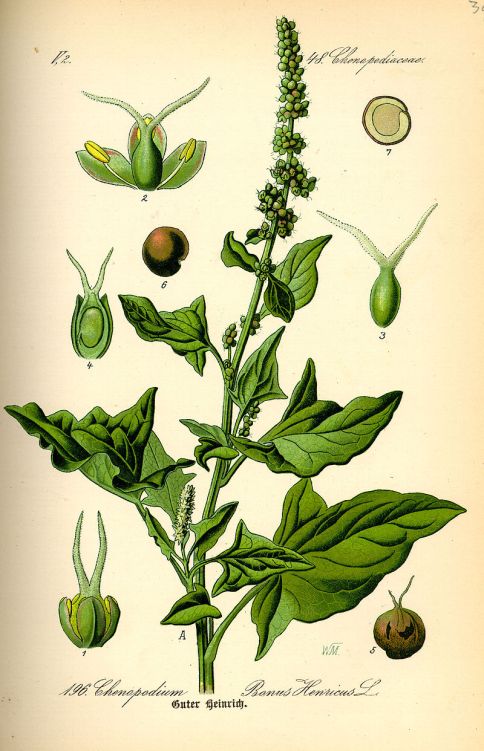
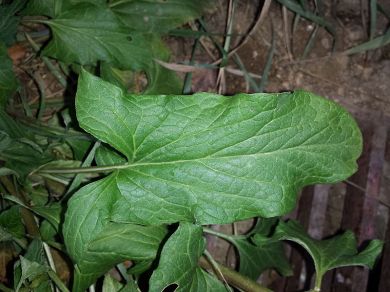
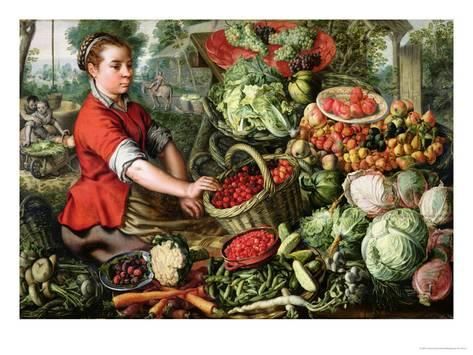
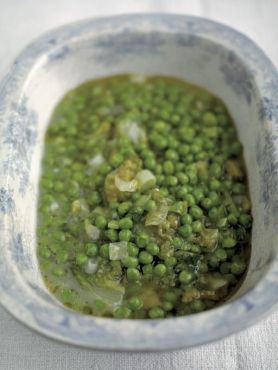
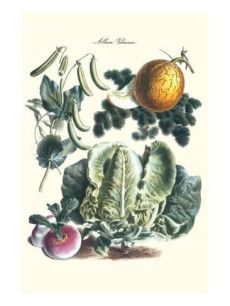

 Image from Wikipedia
Image from Wikipedia
 Image from a gardening catalog.
Image from a gardening catalog.
 Image from the Burpee catalog
Image from the Burpee catalog Image from Graceful Gardens
Image from Graceful Gardens Image from Breck’s catalog
Image from Breck’s catalog


 Image from Encyclopedia Britanica
Image from Encyclopedia Britanica




 Image from Wikipedia
Image from Wikipedia Image from Wikipedia
Image from Wikipedia




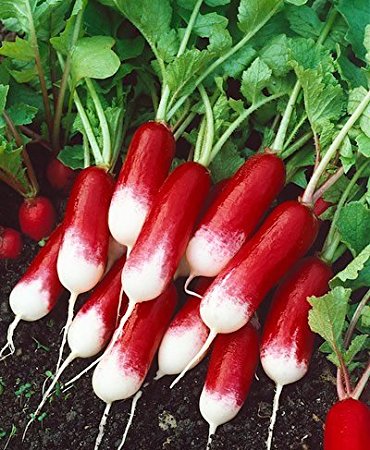





You must be logged in to post a comment.